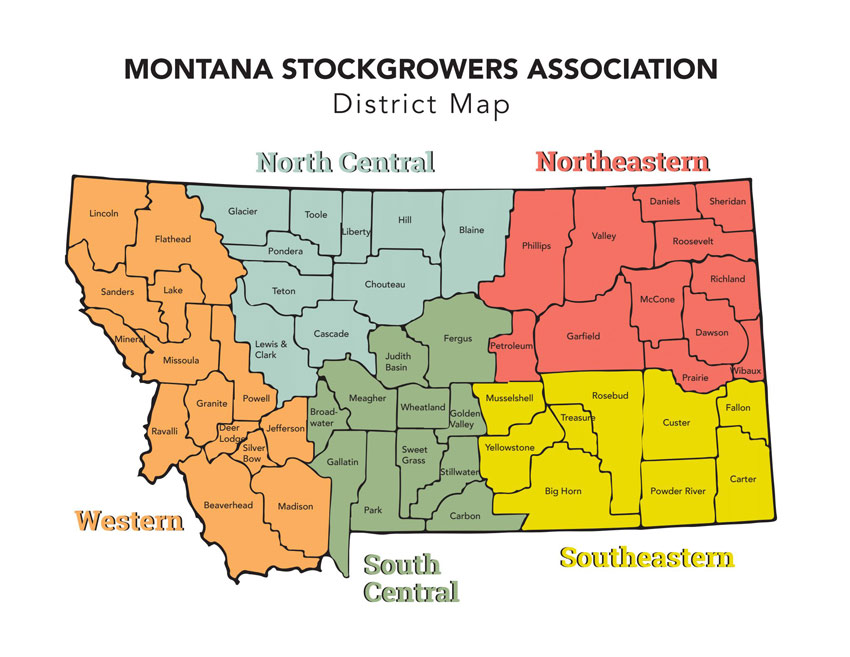Sara Stevenson – Running for the South Central District
City: White Sulphur Springs
Industry involvement: Sara Stevenson was born into a cow/calf operation north of Helena and lived and worked there until she married. Sara married a seedstock producer from Hobson where they lived and worked the third-generation family ranch while raising their children. Sara and her family grew the ranch in size and scope until they had to scale back and rethink.
After 25 years in Hobson, the family decided to expand onto their own ranch to accommodate their kids. In 2020, they transplanted their cows to White Sulphur. The family continues to sell in two sales per year with the Stevenson Angus Ranch, but their ranch is separate and wholly owned and operated by Sara and her husband.
Sara also still assists her father with his ranch in Helena on an as-needed basis. Once her son completes his active duty in the Army, she hopes that he takes over her role on her parents’ place. Sara’s daughter and her boyfriend are assisting with the ranch here.
In your opinion what are the major challenges the beef industry will face in the next ten years?
Although I do not want to relax efforts on the major topics currently facing our beef industry, such as continuing to work on Tax codes that allow for the next generation to do what we all love. This includes a total tax statute that allows for asset transfer from income Tax to Estate taxes. This continues to be a challenge and needs guidance from our boots on the ground. Our other current challenge is qualified ranch help. I like the H-2A program and believe it can assist us through this difficult time. But I also see a few more new challenges coming down the road that may require our foresight and wisdom. A couple major challenges of the Beef industry and agriculture in general in the next ten years will include water usage, and competing land values as the increasing human population expands out of the cities and into rural areas. I see these two topics effecting the industry in different ways. The water usage is already starting and will continue to grow in concern as the population size increases. There is only so much available water and we need to learn new and varied practices to treat it as the precious resource that it is and not to take it for granted. If we act proactively, we may not find ourselves in a reactionary state like the agriculturists in Central California. The growing human population lends itself to numerous agricultural challenges. First and foremost, food supply. We as American Agriculturist are doing great at increasing efficiency and meeting this challenge, but we may need to make a few adjustments in the future. We will also be faced with land usage challenges; all these new humans, need a place to live. Again, if can visualize a solution before it is a problem, we can possibly alleviate or mitigate some potential problems.


